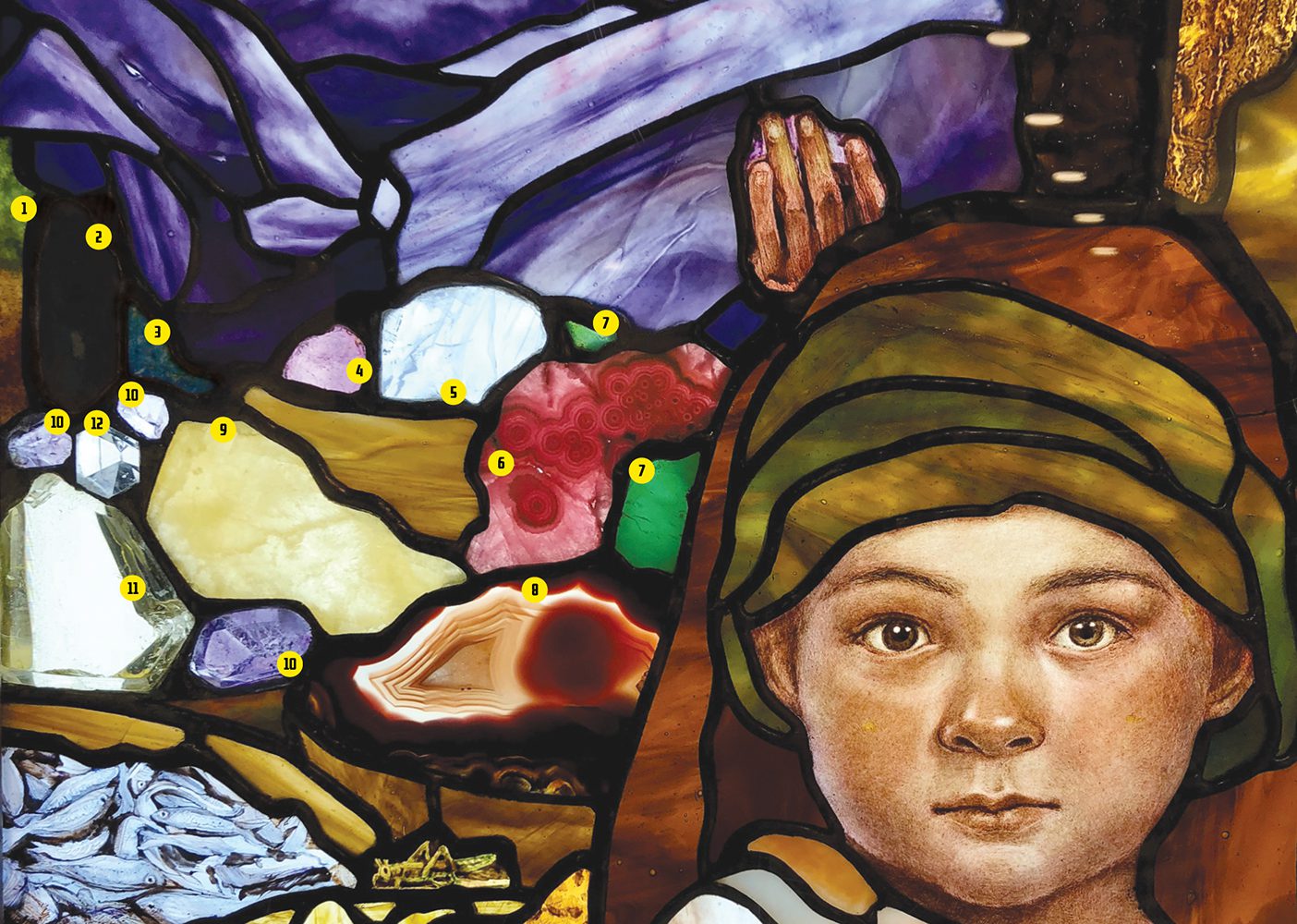Embedded in a stained-glass mural in the new Rome Italy Temple Visitors’ Center is a real widow’s mite, salt from the Dead Sea, and a bit of BYU. The mural’s artist, Tom Holdman, enlisted the help of BYU’s Geological Sciences Department to find 12 stones to represent the scattering and—set together in the stained glass—gathering of the 12 tribes of Israel. Professors Jani Radebaugh (BS ’93, MS ’99) and Jeffrey D. Keith (BS ’77) combed through BYU’s collections, choosing distinct stones from all over the world that, cut thin, would allow light to pass through. Where possible they consulted Exodus 28, which describes 12 stones, each inscribed with a tribe of Israel, decorating a high priest’s breastplate. Their selections make up a tiny portion of Holdman’s 7-by-12-foot mural of Christ ministering. Learn more about the stones below.

Rocks from BYU Collections
1. Green agate, India
2. Obsidian, unknown
3. Lapis lazuli, Chile
4. Rubellite, unknown
5. Rose quartz, California
6. Rhodochrosite, Argentina
7. Chrysoprase, Australia
8. Jasper, unknown
9. Honeycomb calcite, Utah
10. Amethyst, unknown
11. Citrine, Brazil
12. Herkimer diamond, New York
Stone Nos. 6, 4, 3, 1, 8, 10
Some of the stones named in Exodus 28 don’t refer to a specific rock. For example, carbuncle (Ex. 28:17) could describe a number of red gems. The professors chose rhodochrosite. Similarly, they chose rubellite for sardius (Ex. 28:17) and lapis lazuli for ligure (Ex. 28:19). Agate, jasper, and amethyst are all named specifically in Exodus 28.
Stone No. 3
Most of the stones are translucent when cut thin—except lapis lazuli. Still, Radebaugh and Keith included this rich blue stone because of its cultural significance in biblical times. Lapis was used in ancient Egypt and Babylon for amulets and jewelry and believed to ward off evil. It can also be found in the Rome temple entryway and bridal room. Keith says, “To me, lapis is heavenly.”
Stone No. 12
Exodus calls for a diamond, but Radebaugh says finding a diamond big enough for the breastplate would have been highly unlikely, and the name of the tribe couldn’t be inscribed on a true diamond. Instead the professors chose a Herkimer diamond, a type of quartz, in its crystal form.
Stone No. 9
Honeycomb calcite is unique to Utah, found only in the Uinta Mountains.









